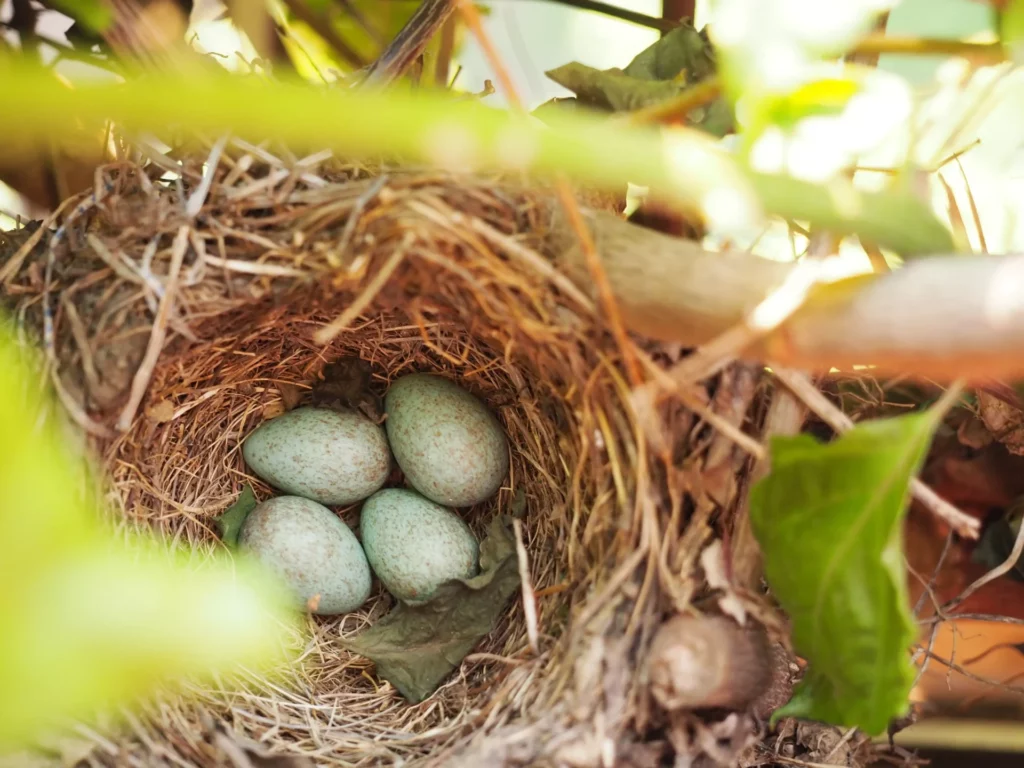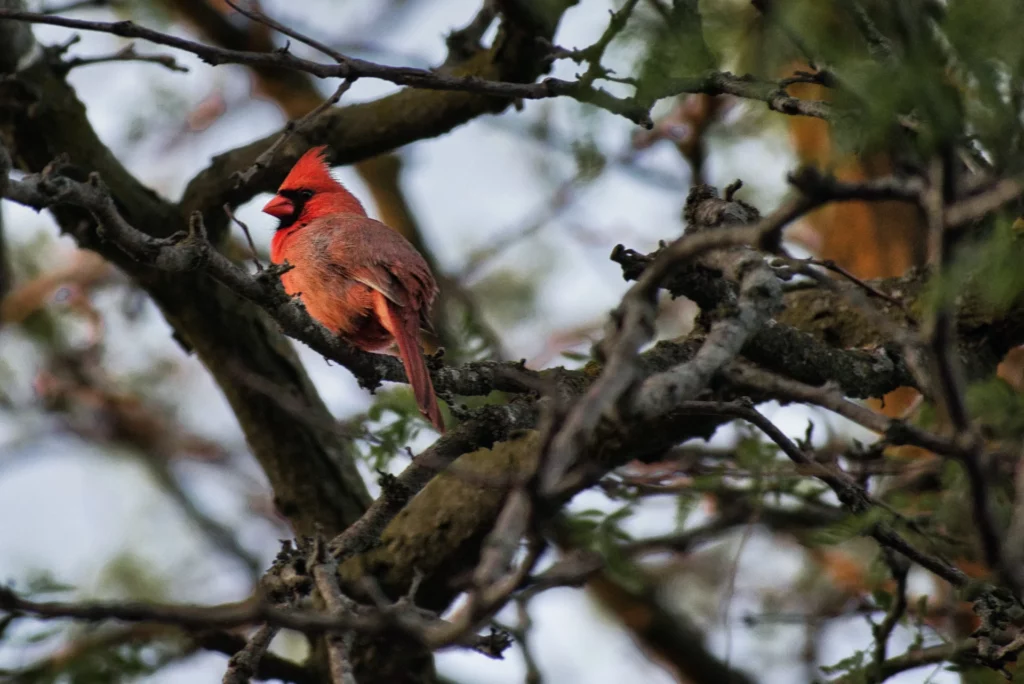The vibrant and charismatic Northern Cardinal (Cardinalis Cardinalis) is a beloved bird species known for its beautiful feathers and melodic songs. Cardinals have a fascinating process of laying eggs as part of their reproductive cycle.
In this article, we will explore the details surrounding the timing of when Cardinals lay eggs, shedding light on their natural reproductive cycle and the behaviors of these remarkable birds.
When Do Cardinals Lay Eggs?
Cardinals typically lay their eggs in early spring, usually between March and May, depending on their location and climate. These birds are known to be relatively early breeders, and the female Cardinal will construct a nest in dense shrubs or trees using twigs, grass, and other plant materials.
After building the nest, the female will lay one egg every day until she has 2–5 eggs. The eggs are typically pale blue or greenish-blue with brown speckles.
How Long Does it Take Cardinal Eggs to Hatch?
Cardinal eggs typically take around 11 to 13 days to hatch. Temperature, humidity, and egg condition affect this length. Let’s look into the factors that affect the Cardinal egg incubation period.
1. Incubation Process
Once the female Cardinal has completed laying her clutch of eggs, she is responsible for incubating them. During this period, she dedicates herself to keeping the eggs warm and creating an optimal environment for their development. When the final egg is laid, the incubation process starts.

2. Maintaining Ideal Conditions
Maintaining the ideal conditions inside the nest is important for successful incubation. The female Cardinal adjusts her body position and posture to ensure maximum contact with the eggs. This direct contact facilitates the transfer of her body heat to the eggs, keeping them at a consistent temperature.
3. Regulating Temperature
The female Cardinal constantly monitors the temperature inside the nest and adjusts her behavior accordingly. She can fluff up her feathers to create an insulating layer, trapping warm air close to her body. She can also flatten her feathers to allow heat to escape and prevent overheating. By carefully regulating her body temperature, the female ensures that the eggs receive the perfect amount of heat required for proper development.
4. Parental Cooperation
While the female Cardinal primarily incubates the eggs, the male Cardinal also provides warmth. The male can help relieve the female from her incubation duties for short periods, allowing her to rest, feed, and regain her strength. This cooperative behavior ensures that the eggs receive constant warmth and attention throughout the incubation period.
5. Embryo Development
Within the Cardinal Eggs, a remarkable transformation is taking place. The embryos gradually develop and grow, benefiting from the warmth the incubating parent provides. Blood vessels form, and organs begin to take shape. The chicks develop feathers, and their beaks and claws develop in preparation for hatching.
6. Hatching
After 11 to 13 days of incubation, the Cardinal eggs are ready to hatch. The chicks use a specialized egg tooth on the top of their beaks to break through the eggshell. This process, known as pipping, can take several hours. Once the chicks have successfully pipped, they exert pressure and push against the shell until it cracks open, allowing them to emerge into the world.
7. Parental Care
Once the eggs have hatched, the parent Cardinals continue caring for the nestlings. They nourish hatchlings with insects, seeds, and fruit. To keep the nest clean and predator-free, the parents will discard the eggshells. The parents feed and protect the chicks until they fledge.
How Many Eggs Do Cardinals Lay?
Most of the time, a Cardinal will lay two to five eggs. The number of eggs a Cardinal lays changes based on the weather and how much food is available. Cardinals usually have smaller nests, with 3 or 4 eggs being the general number.
Most of the time, the female Cardinal lays one egg every day until the nest is full. This means that laying an egg can take several days since each egg is put in the nest one day after another. Once the eggs are laid, the female will start incubating them to help them grow.
Cardinals lay small to medium-sized eggs that are smooth on top. They are usually light blue or greenish blue in color with brown or gray spots or speckles that help them blend in with their nest.
How Do Cardinals Protect Their Egg?
Cardinals use numerous methods to safeguard their eggs and ensure growth. Cardinals protect their eggs using the following methods:

- Cardinals carefully choose nest locations to avoid predation. They nest in thickets, bushes, or trees to hide from predators.
- The nest structure protects the eggs from harm. Cardinals make strong nests using twigs, grass, leaves, and other plant materials. Predators can’t usually reach the eggs since the nest is cup-shaped and hidden.
- Both male and female Cardinals defend the nest and eggs. They are in constant rotation, watching for intruders.
- Cardinals use warning sounds to warn other Cardinals and adjacent birds of danger. They warn other Cardinals if a predator approaches the nest, scaring it away.
- Cardinals can attack to defend their eggs. They can flap their wings or charge at threats with their sharp claws to scare the predators away from the nest.
- Cardinals hide their eggs among trees and dense vegetation. While incubating, the female Cardinal stays calm and crouches low, making it harder for predators to locate the nest.
Conclusion
The final answer to the question of when Cardinals lay eggs is closely tied to the time of year when nature comes back to life in the spring.
By learning about these time frames and behaviors, you can better understand the delicate balance of nature and the great lengths that Cardinals will go to in order to keep their offspring alive.

